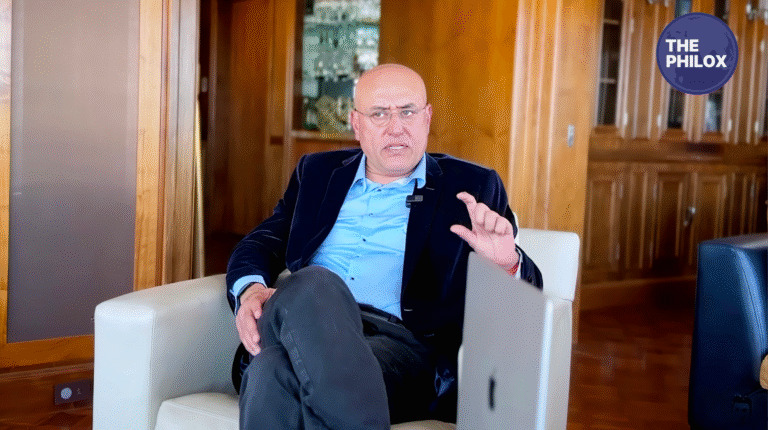
India’s billionaire Mukesh Ambani’s younger son, Anant Ambani, has always been in the forefront because of his family’s great riches and clout.
His padyatra—foot pilgrimage—to Dwarka before his birthday lately has generated debates on social media and across media.
Although padyatras are customarily done as a means of spiritual devotion and self-control, some state that Anant Ambani traveled a good distance in luxury cars instead of walking.
This has sparked a lot of conjecture and criticism since many people doubt the validity and intention of the padyatra.
The meaning of a padyatra
In India, a padyatra is significant from the religious, cultural, and social levels. Understood by saints, political leaders, and ordinary people equally, it is sometimes considered as an act of dedication, humility, and endurance.
Considered a means of purifying the soul, seeking divine favors, and engaging with the common people is walking great distances to temples or holy sites.
Among the most famous padyatras in history are the Dandi March of Mahatma Gandhi and several yatras taken by political leaders to interact with the general public.
A padyatra is supposed to be a physically demanding but significant experience given this historical and spiritual setting.
Anant Ambani’s Trip to Dwarka
Starting a padyatra to Dwarka, a famed pilgrimage place in Gujarat, Anant Ambani set out to reach the dominion of Lord Krishna. According to reports, he traveled this road in line with his religious commitment, celebrating his birthday.
Media reports and eyewitness accounts, however, show that he drove a sizable fraction of the path in high-end luxury cars, casting doubt on the actual nature of his journey.
Further fuelling the discussion are pictures and videos of a convoy of pricey vehicles accompanying him on the trip on social media.
Public Opinion and Complaintancy
The public has responded differently upon learning that Anant Ambani might have substituted vehicles for walking.
Critics view his actions as a publicity ploy while his defenders contend that his health issues might have hampered his capacity to walk great distances and that his objectives were solely devotional.
Many have noted that a padyatra loses its meaning if the pilgrim does not really walk. Particularly outspoken over the issue, social media users have memes and comments disparaging of the concept of a “luxury padyatra.”
Some have also expressed worries about the environmental effects of such a big convoy accompanying a claimed foot trek.
The Part Played by Wealth and Privilege
The great difference between a conventional padyatra and Anant Ambani’s rendition of it is one of the main causes of the debate.
Padyatras have always been connected historically with simplicity, endurance, and direct interaction with the people. Anant’s path, on the other hand, included a fleet of expensive vehicles, well-publicized security, and major media attention.
This has sparked more conversation on how the ultra-rich interact with cultural and religious customs.
Critics contend that such actions undermine the actual meaning of spiritual practices and transform them from real acts of devotion into extravagant shows of riches.
Health Issues and Defense
Advocates of Anant Ambani have defended him by pointing his past medical problems. He has freely talked about his battles with obesity and associated medical issues.
Walking great distances could have physically taxed him given these obstacles. Some contend that rather than being questioned, his partial attendance in the padyatra should be valued.
Furthermore, his family has a history of supporting religious and charitable initiatives that fans would want to take into account before rendering decisions.
The Controversy: Media’s Part
Public opinion has been much shaped by the great media coverage of Anant Ambani’s padyatra. With differing viewpoints, news outlets, internet platforms, and social media influencers have all chimed in on the subject.
Emphasizing his trips to temples and religious offerings, some media sources have focused on the devotional side of the trip.
Others have underlined the seeming contradiction of a “car-assisted padyatra,” asking whether it was a planned event meant for publicity.
The media’s amplification of the debate guarantees that the problem stays a subject of conversation for a broad audience.
The Affect of Celebrity Culture
Religious customs and pilgrimages have lately become venues for famous people and powerful leaders to demonstrate their religion.
From corporate tycoons making large donations to Bollywood stars visiting temples, religious acts often get major media coverage.
The padyatra of Anant Ambani conforms to this larger trend whereby well-known people participate in public demonstrations of loyalty that draw both respect and doubt.
This begs significant issues about how public image, money, and faith interact in modern life.
The more general influence
Apart from the current controversy, Anant Ambani’s padyatra draws attention to a developing argument about authenticity in religious and cultural events.
It starts conversations about the definition of loyalty in a time of public exhibition and media scrutiny.
It also begs issues regarding how riches shapes the way religious traditions are followed and whether such activities should be modified for those with various physical capacities.
Moreover, the environmental issues raised by the big convoy of automobiles employed during the padyatra draw focus on the sustainability of such gatherings.
Final Thought
Though not exactly for the reasons Anant Ambani may have meant, his padyatra to Dwarka ahead of his birthday has definitely drawn interest.
Although the pilgrimage was supposed to be a spiritual trip, the use of luxury cars has caused great controversy and condemnation.
The debate draws attention to the difficulties keeping authenticity in religious activities when privilege and money are involved.
Whether one sees his padyatra as a sincere act of faith or a well thought out public relations event, it has spurred significant debates on the nature of loyalty, the function of media, and the impact of riches in religious observances.
The argument around Anant Ambani’s padyatra ultimately reflects how modern society views spirituality in the context of wealth and power.








